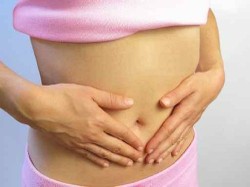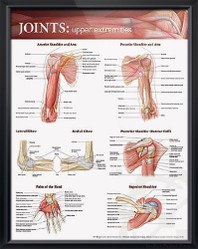What Is Vitamin B3?
Vitamin B3, more commonly known as niacin, is another water soluble vitamin member of the B complex group. It is also known as nicotinic acid and vitamin PP (pellagra-preventative).
Nicotinic acid was first described in 1867 but was not recognized as a vitamin till 1937 by the work of the American Dr Conrad Elvehjem.
B3 is found in many foods but is also naturally produced by the body using an amino acid (tryptophan) found in protein.
What Does B3 Do For You?
- It helps with the normal functioning of the brain, nervous system and digestive system.
- It also helps maintain a healthy skin.
- It aids the metabolism of carbohydrates, fats and protein.
 | Vitamin B-3 and Schizophrenia: Discovery, Recovery, Controversy |
 | Niacin: The Real Story: Learn about the Wonderful Healing Properties of Niacin Niacin (vitamin B3) is a small molecule made of only 14 atoms, smaller even than the simplest sugar. But this one molecule has profound effects on health: it plays a role in mor... |
 | Feel Better, Live Longer with Vitamin B-3: Nutrient Deficiency and Dependency The first unified theory of nutrient deficiency and dependency Dr Linus Pauling's revolutionary idea in the 1960s: the world is in a B-3 deficiency and dependency pandemic. Some... |
Food Sources of B3
Important
- Liver (100g serving)
- Meat (100g serving)
- Fish (fresh and tinned) (100g serving)
- Peanuts (50g serving)
- Yeast products e.g. Vegemite/Marmite (3g serving)
- Fortified breakfast cereals (30g serving)
Moderate
- Nuts (50g serving)
- Percolated coffee (250ml serving)
- Avocado pear (150 g)
- Potatoes (120g serving)
Low or Nil
- Fruit, vegetables, eggs, dairy products, pulses
- Fats and oils (trace)
Note: More than half of the average person's niacin requirements is actually produced in the body from dietary protein.
What Destroys B3?
B3 is normally reasonably stable though it can be lost into cooking water since it is water soluble. It is also lost in drips from thawing frozen foods.
Only a comparatively small percentage is eliminated in responsible commercial food processing.
Excessive alcohol consumption is a natural enemy because it impairs the vitamin's absorption and utilization in the body.
 | 1 oz Niacinamide Face Serum with Vitamin B3 for Younger, Plumper, Firmer Skin Ingredients, Aloe barbadensis (Organic Aloe Vera) Juice, Kosher Vegetable Glycerin, Niacinamide Vitamin B3, Simmondsia chinensis Oil, Cetearyl Olivate, Sorbitan Olivate, Cetyl P... |
 | Vitamin B3 (Niacinamide USP) - 1.0oz / 30g Powder Form. Description: Niacinamide is the water-soluble form of niacin, an essential vitamin of the B group, known as vitamin B3. Purity 99-101 %, pH 6-7. 5 (5 % water solution). White po... |
 | 1 lb. Niacin Nicotinic Acid Powder (454g) Vitamin B3 Lower Cholesterol Heart Health Pharmaceutica... Benefits of Niacin: Niacin is involved in the metabolism of carbohydrates, protein and fat and the generation of energy from foods. Niacin is needed in the formation of red bloo... |
B3 Deficiency Problems and Symptoms
Severe deficiency results in a disease called pellagra.
This disease became quite common among peasants in Spain and Italy when corn was introduced in the early eighteenth century. Corn quickly became an important part of the peasant's diet but because the grain has a very low content of the amino acid tryptophan as well as a low niacin content the diet was extremely deficient in vitamin B3.
The severe deficiency symptoms of pellagra are the "three Ds" - dermatitis, diarrhea and dementia. Less advanced symptoms include general fatigue and weakness, loss of appetite and skin disorders. Of course, these early symptoms could apply to numerous - other diseases or illnesses.
Today pellagra is largely confined to poverty stricken countries where corn is the staple diet.
Recommended Daily Intake
The food source requirement of B3 is influenced by the amount of B3 produced naturally by the body.
Therefore an intake formula has been worked out to include both the two natural sources (i.e. derived from food and manufactured by the body). The recommended daily intake is then expressed in "niacin equivalents" .
The amount of niacin required also bears a relationship to the number of kilojoules consumed.
The Australian recommendation is 18 milligrams for a healthy male adult (decreasing slightly as he becomes older) and 13 milligrams for a woman (decreasing slightly with age but increasing during pregnancy and while breast feeding). The increase required by women is usually taken care of by the body's natural manufacturing process which works overtime during pregnancy and lactation.
Use of Supplements (on medical advice)
A high supplementary dosage is sometimes used to lower cholesterol levels when treating a heart condition. Such a dosage must only be taken under strict medical supervision.
There have been widespread claims that B3 is a "miracle drug" for the treatment of schizophrenia.
However, there is absolutely no reliable supporting scientific evidence so the claims must be written off as myths or wishful thinking.
Toxicity
Normally B3 is considered non toxic. However, large doses (more than 3 grams per day) can cause irritability and hot flushing sensations.
You might also like
How Does Digestion Work?Digestion is the process of breaking down food molecules into forms that can ...
JointsJoints occur at the intersections of bones.





 Your rash and itching problems may be Scabieson 03/10/2013
Your rash and itching problems may be Scabieson 03/10/2013
 Tickson 11/06/2011
Tickson 11/06/2011
 Vitamin Kon 10/10/2011
Vitamin Kon 10/10/2011
 Vitamin Eon 10/10/2011
Vitamin Eon 10/10/2011


Comments